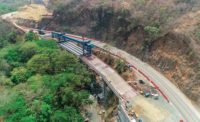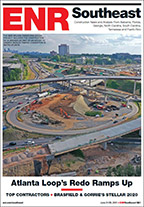
When companies announce reorganizations, they often just rearrange existing operations and hope for the best.
But when KBR (No. 12) brought in Stuart Bradie as CEO in June 2014, he immediately focused on the bottom line. Within six months, he proclaimed the total transformation of the firm’s business.
"We used to be in 16 business lines. We have narrowed it to three," says Graham Hill, executive vice president, who, like Bradie, previously worked for WorleyParsons. The three units will include technology and consulting, emphasizing KBR's proprietary technologies and expertise in the oil-and-gas and chemicals arenas, such as in floating LNG facilities; engineering and construction, which focuses on KBR's engineering-procurement- construction capabilities around the world; and government services.
KBR is leaving several markets. "We are exiting from the stand-alone, lump-sum construction market," says Hill. He says there is too much risk and little profit in such contracts.
Power is another market KBR will drop. "With the emphasis on gas-fired plants, the only ones making money in power these days are the equipment manufacturers," Hill says. KBR also is exiting the U.S. minerals market.
KBR also plans to sell its buildings group. "That is a very competitive market that is not in our core competency. The buildings group would be better off with a contractor specializing in buildings," Hill says. He says the firm's infrastructure practice is in the same position.
"We also plan to move our top regional people to the regions they manage, rather than try to run everything from Houston," Hill says.
Overall, the reorganization will become a more streamlined, agile and customer-focused business, allowing the firm to play to its core strengths, Hill says. For KBR, it means more emphasis on the bottom line.




Post a comment to this article
Report Abusive Comment